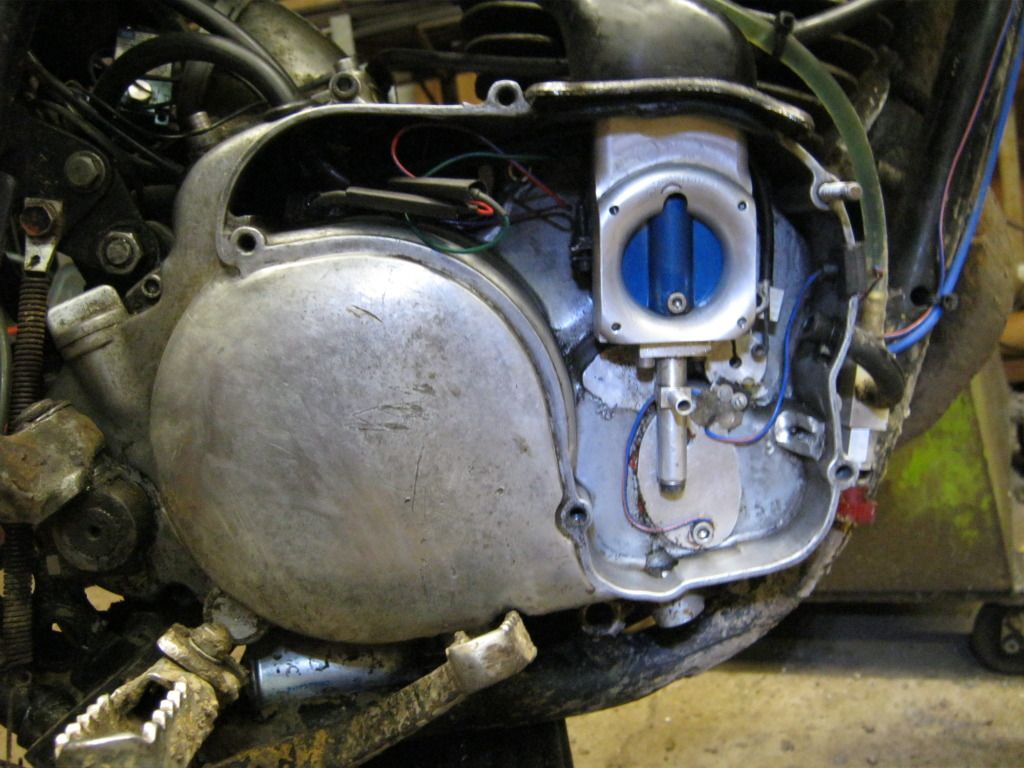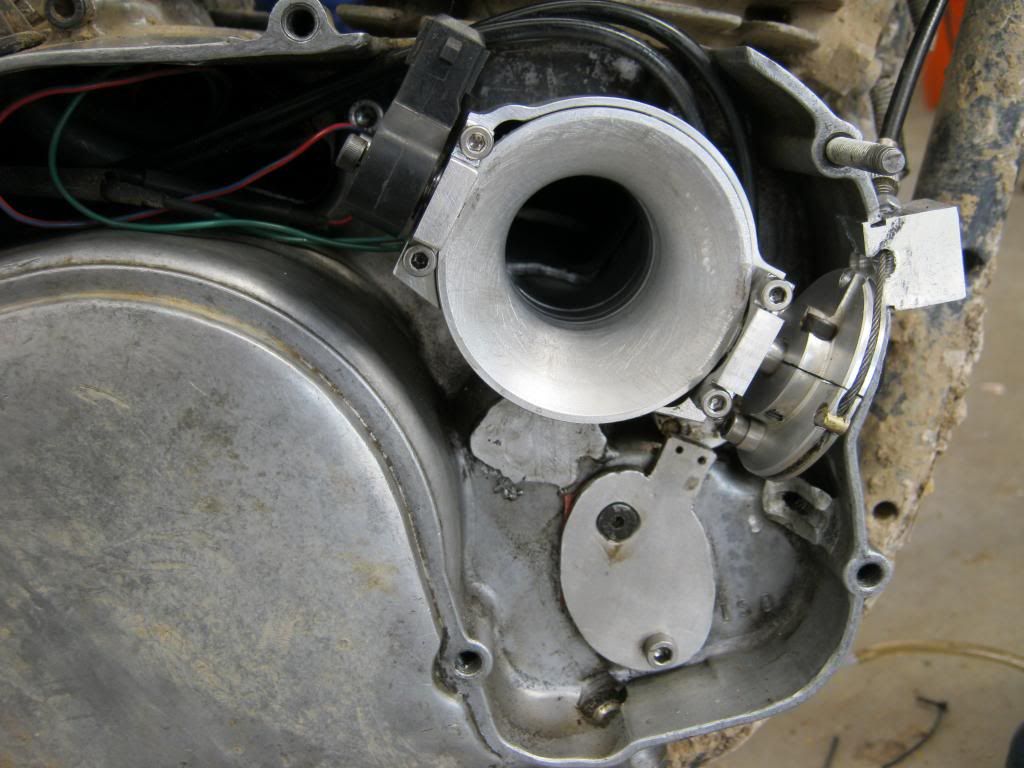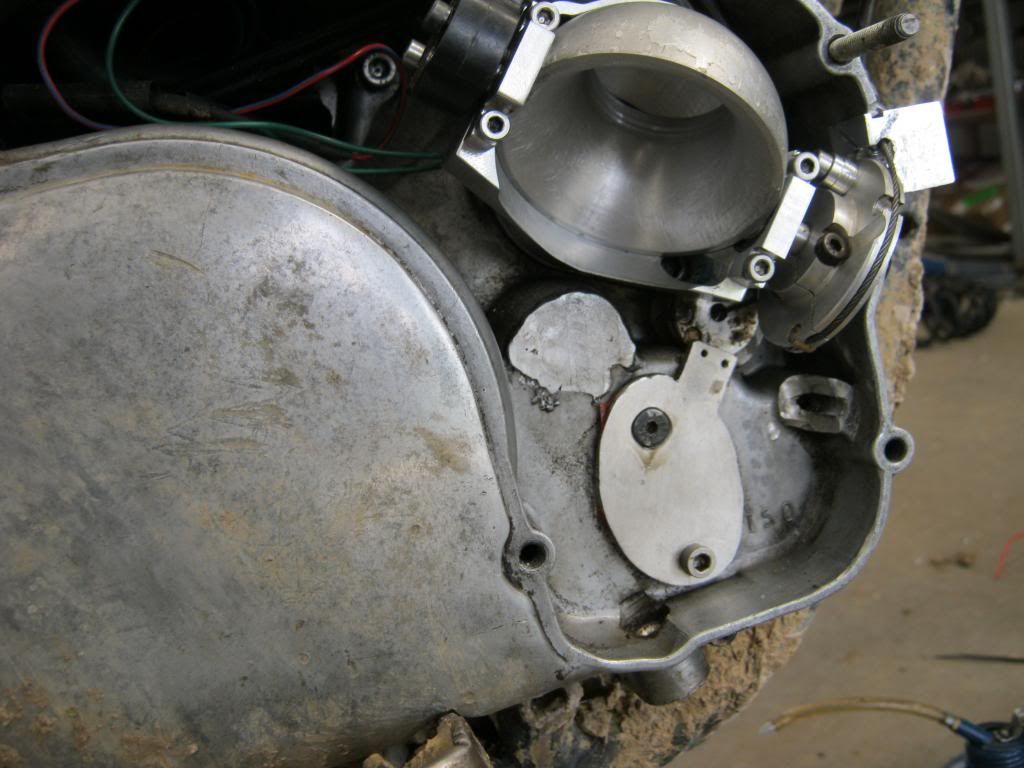Here is some more stuff i sent TZ a while Back
http://www.psipowerinc.com/mxAtvCarb.html
Attachment 257214Attachment 257220
heres the other offshoot of the lectron lake etc
http://revmasterautomotive.com/revmasteraviation/?p=221
seen these talked about never a look though.
Attachment 257215
http://www.aeroconversions.com/produ...arb/index.html
Attachment 257216
Plus another
Attachment 257222
http://www.psicarbs.com/bigair.php
http://www.saltmine.org.uk/dale/dale-faq.htm
Eplanation here "
The Lectrons have a central fuel outlet, that being the needle area. The needles controlled all fuel now with the exception of the power jet. One of the ideas was to eliminate the rich and lean spots in the fuel delivery curve as can happen with a multi-area delivery device such as a normal carb. The other was to make a system that was easy to adjust. Lectron succeeded brilliantly in one area, failed miserably in the other.
Fuel control was with the needle. A taper was ground into the needle on the side that faces the intake area of the engine. Needles were graded and marked 5-3, 6-1, 6-2 etc. These numbers were easy to understand. The first number was the overall richness of the needle. A 5 series was leaner than a 6 series. The second number was the midrange richness. A -3 was richer than a -1. The very top end was controlled by the power jet exactly as we understand power jet function now.
In order to have a "base" point that tuning could be initially set to, a distance was specified as standard, a datum. This was the length of the needle from the adjusting nut(what would be the needle clip in a Mikuni) and the tip of the needle that extends into what would be the needle jet in a Mik. The "needle jet" was not adjustable, much like the TMX style of Mik. The standard length was 1.945" or something like that. If the length was longer, the overall fuel was leaner as the taper would be lower and this would allow less fuel for any given throttle opening. The opposite was true if the needle length were shorter than 1.945". I think that if you had to go more than 2 turns in either direction, it was time to change the needle for a different fuel curve. This allowed for the fine adjustment of fuel.
If one were to replace the screws holding the top of the Lectron with snap clips to allow quick removal of the top, a minor needle adjustment with power jet swap could be made in about 2 minutes for 2 carbs. This was one of the Lectrons strong points.
If jetting was ok in the mid-range but off a bit just before power jet came on, you wouldn't want to adjust the needle as this would upset the balance with the mid-range. You would select a needle with a different second number - 1, -3 etc. THIS is where the Lectron failed. The quality control of the grinding of the needles was such that even though you had two needles marked the same, it didn't mean that you hade two needles that were the same. At first this caused all kinds of confusion as one would change the needles expecting a change in a known area and the engine wouldn't run anything like what was expected. Only after measuring the needles very accurately at absurdly small stations were we able to ferret out that Lectron needles were ground by the firm of "Byguess and Bygolly"!
The only way to solve this problem was to carefully hone stone the needles and hope that the results gave you a pair of needles that could be used together, run them, grade them, and hope that one was fortunate enough to get a selection after a while. With all this tuning work done to the needles, it's not hard to see that if one had a good set, they didn't get loaned out at all(Hey! I need as set of 6-2's. Got any I could borrow for this race?) Might as well part with your right arm once your friend figures out your needles work better than his!
On of the other strong points was that without a pilot circuit, the Lectrons could be run at absurd angles(35 deg) compaired to the Mik's. This allowed the carbs to be mounted to a straight manifold on the Super-street RD's for a more direct shot at the intake. If a Mikuni was mounted this way, it would flood horribly under hard braking as fuel poured out of the pilot circuit. This was not a problem with the central fuel point on the Lectron's.
But time moves on and the quality control finally caught up to Lectron(and some other problem with finances or something). Carb technology advanced as well and we have very good, though expensive stuff now that needs computers to do all the thinking where us mortal humans did it before. This is progress...I think."
http://www.ozlaverda.com/what-s-an-e...or-t15-10.html
Attachment 257217
I knew i had seen this somewhere explanation of the "cheater" Carb for controlled carb classes
http://lectronfuelsystems.com/faqs.html#Tuning
What is a Lectron High Velocity Carburetor?
The standard Lectron carburetor
has a 2mm taper. For example a 40mm carburetor will start out 40mm and taper down to 38mm at the fuel pick up then taper back up to 40mm. The Lectron High Velocity carburetor has a 4mm taper.
For example, a 38mm HV carburetor will start at 40mm and taper down to 36mm at the fuel pickup then back out to a 38mm. This carburetor was first designed for racing classes that had a restriction on carburetors size. This was Lectron’s answer to have a small carburetor work like a big carburetor. The Lectron High Velocity carburetor is also used today for bikes that do not have much “port speed”. Engines with a small amount of port speed have trouble picking up fuel efficiently this carburetor corrects that. Final note, many people put Lectron High Velocity carburetors on engines not understanding why? Just because of the name “High Velocity” they think it is a better carburetor than the standard Lectron.
Don’t confuse the issue.
History of Reds Carbs from what i understand Red or his son was in business with one of Kenny Roberts sons. Wob would know for sure, but i think his son may have worked for KR.
History Behind the AFT Carburetor
Since the beginning of the combustion engine, man has had a natural desire to get as much power out of the wide variety of motors manufactured for work and play. For the past 37 years, William “Red” Edmonston has chosen the motorcycle as his passion for power and speed.
Red started racing Triumph motorcycles in the 1940’s and after 13 years of racing and breaking bones, he decided to move to California and work with Triumph as a road manager as well as open a Honda dealership to provide for his young family. During the 1960’s, Red continually became frustrated with the fuel delivery systems for the motorcycle industry. Most of the carburetors being manufactured and sold on motorcycles were complex to tune, and required a constant effort to keep tuned for proper operation of the motor. This was primarily because of the multiple and overlapping circuits (different jets for the differing throttle positions) that caused the air fuel mixture to be very rich at different throttle positions. These early carburetors could not adapt for altitude changes either, which added to the constantly differing air-to-fuel ratios and tuning problems. Besides the frustrations that many had with keeping their motorcycles running at optimum, these crude fuel delivery systems also cause the motor to run very inefficiently and with significant harmful emissions.
In the late 196o’s, after many years of racing, managing race teams, and selling motorcycles, Red began his long career of inventing, designing, and manufacturing carburetors for the motorcycle industry. In short, Red has had a significant impact on the motorcycle industry over the past 40 years. Red has held nearly 100 patents and has invented and manufactured nine different carburetors, each of which has shared some similarities while each subsequent model continually added improvements in functionality and performance. The history of the Red Edmonston’ carburetors spans many years and a great deal of experience and improvements:
· 1968-1969: The Lake Injector prototype and final production model carburetor.
· 1970-1971: The Pos-A-Fuel prototype and final production model carburetor.
· 1971: The Pos-A-Fuel with remote float bowl production model carburetor.
· 1973-1974: The Lectron prototype and final production model carburetor.
· 1976-1977: The E.I. Prototype and final production model carburetor.
· 1978: The Blue Magnum production model carburetor.
· 1980: The Bank of Four Blue Magnum model carburetor.
· 1981-1982: The Qwik Silver prototype and production model carburetor.
· 1982: The Qwik Silver Bank of Four carburetor wins Daytona super-bike race.
· 1993: The Qwik Silver II production model carburetor (sold to Edelbrock).
Lastly i think Mike Sinclair was meant to be a gun out sorting out Lectrons i read somewhere. I guess possibly through the Roberts days connection exposure.





 Reply With Quote
Reply With Quote











Bookmarks